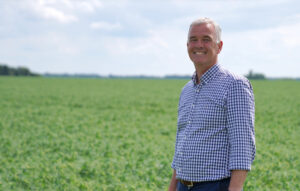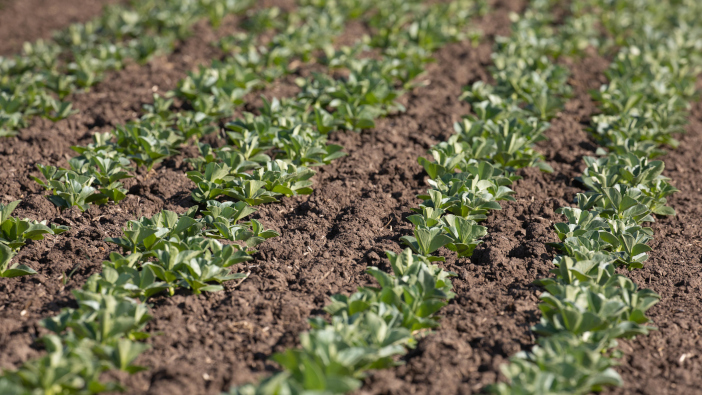Several factors are behind the reported fall in the area of beans grown, according to the Processors and Growers Research Organisation (PGRO).
Defra’s agricultural land use statistics show that the cropping area for field beans is down from 208,154ha to 131,718ha. A drop of 37%.
Last year’s wet conditions impacted drilling for many, with spring work also being challenging, leading to some abandoning the crop altogether.
Options within the Sustainable Farming Incentive (SFI) have also displaced some break crops within rotations.
“After a difficult year and harvest, it’s no surprise that many farmers have turned to the SFI – farmers need to do what’s best for their business and we agree that they should be paid for providing positive environmental outcomes,” says PGRO CEO Roger Vickers.
“The fall in area is unlikely to be as significant as is being reported – because pulses are such a small sample size, Defra acknowledges that accuracy is extremely difficult.
“However, we remain worried that farmers might overlook the important role pulses can play on their farms, and would urge them to make sure they’re fully aware of the impact some SFI options can have on their future rotation.”
Adding to this, Andy Bury, a trader with Frontier Agriculture, noted that the combined winter and spring bean area was closer to 165,000ha. “We agree the area is down but we think it’s substantially higher than the Defra figures.”

The PGRO has already voiced concerns that SFI options, while well-meaning, could negatively impact pulse production. A major concern is that pulses could be left in the ground for a number of years, or be more frequently included in rotations, increasing the likelihood of soil-borne diseases.
“A normal, sensible rotation would not encourage pulses closer than one crop in five, and yet in an SFI scenario soils might easily have almost continuous host legumes present,” says Roger.
“This puts farmers at risk of not being able to plant beans afterwards for a few years once the SFI agreement is finished.”
However, the benefits of including pulses within a rotation are well documented. “It is hard to find another group of crops that offer more positive potential for environmental good and long-term sustainability via increased production than legumes,” he adds.
“Pulses provide nitrogen, and improve soil fertility for the following crops, they have a favourable environmental profile and growing more of them is seen as having huge potential to help reduce carbon emissions from the UK agricultural sector.
“Numerous studies have also confirmed the positive benefits of beans and peas to pollinators, insects and birds.”
Roger concludes that there has never been a better time to consider beans within the rotation, with initiatives such as the Nitrogen Efficient Plants for Climate Smart Arable Cropping Systems (NCS) Project.
“We understand why SFI is appealing, but we implore farmers to consider the bigger picture.
“Don’t make decisions that could have long-term implications based on one bad year – the SFI agreement is for three years, but it has the potential to impact your rotation for many years after that.”


